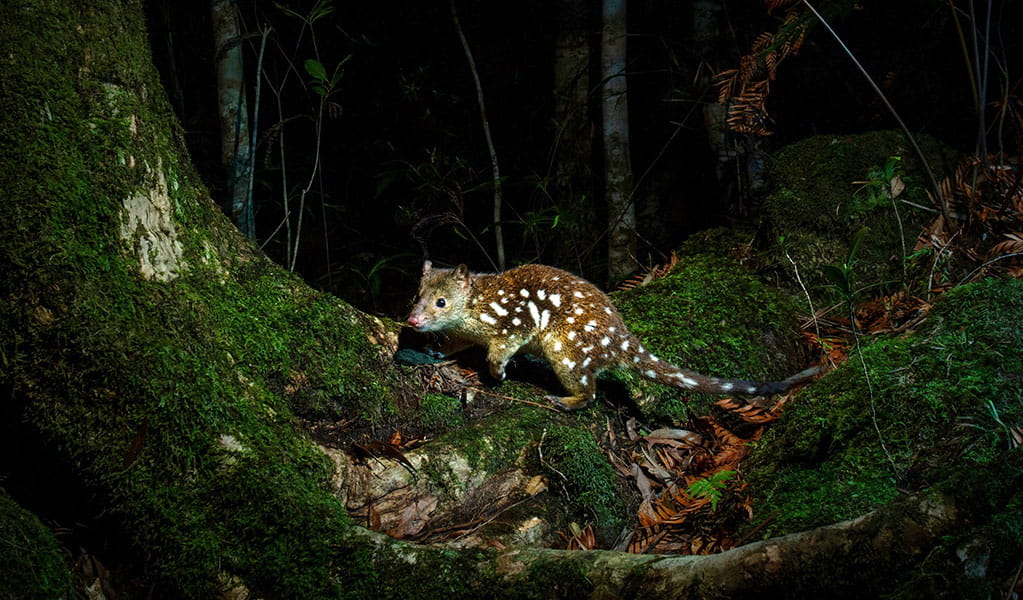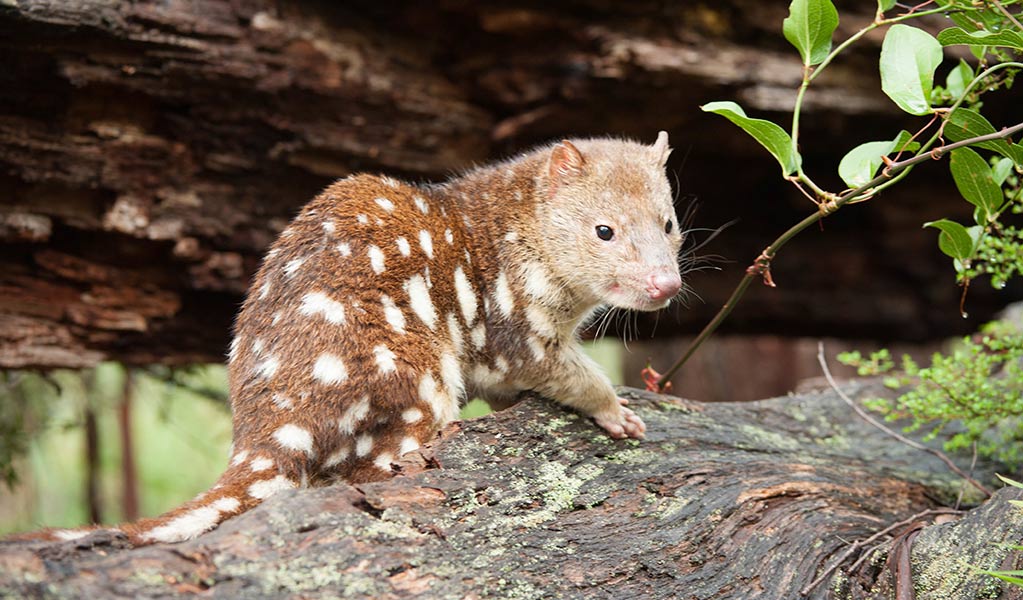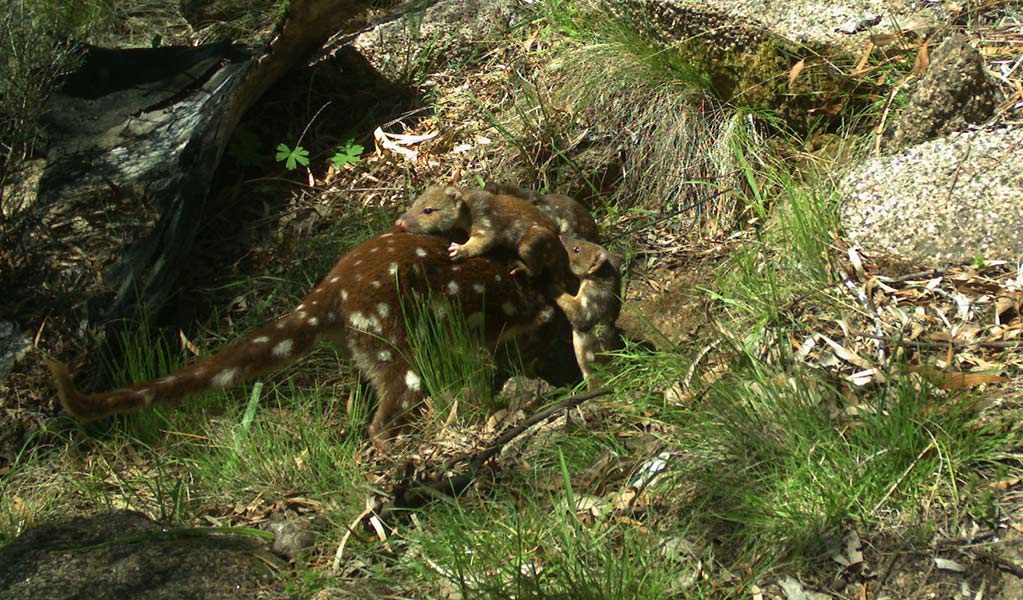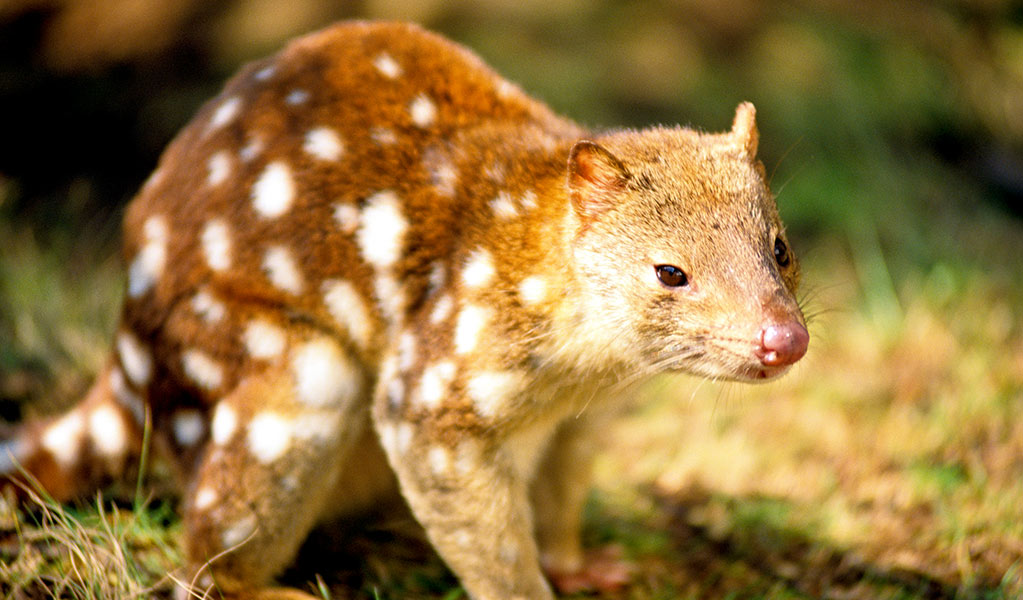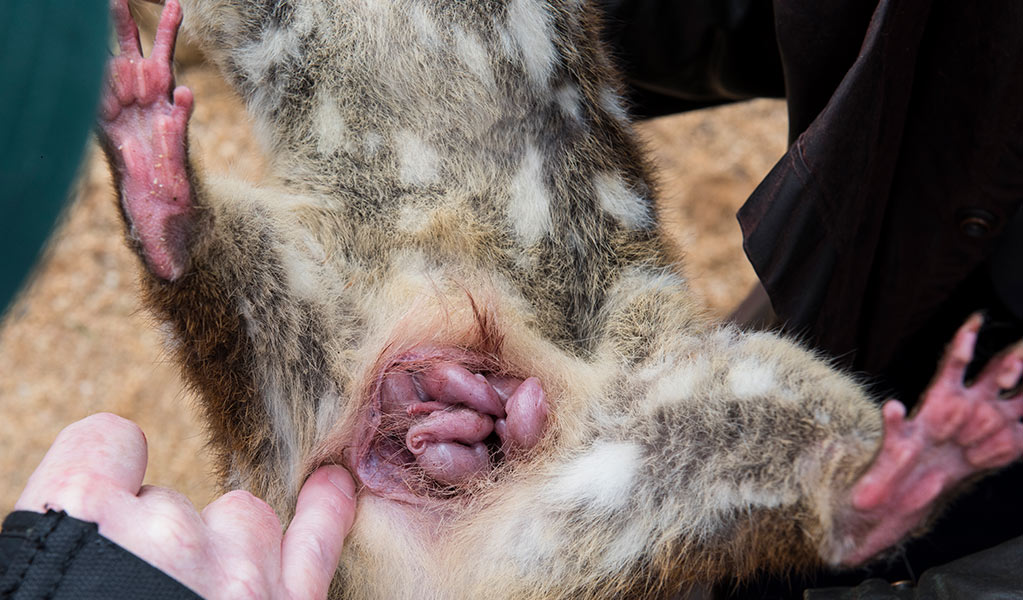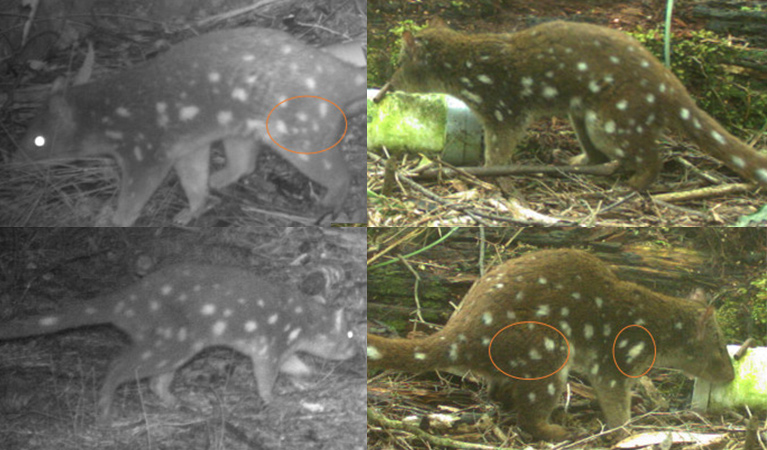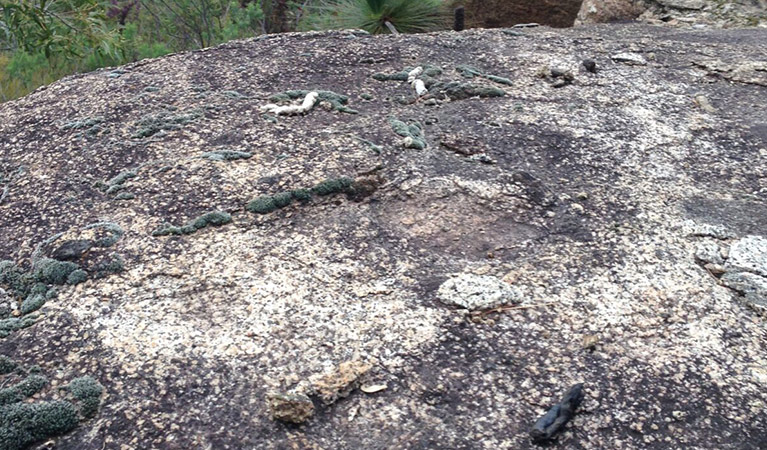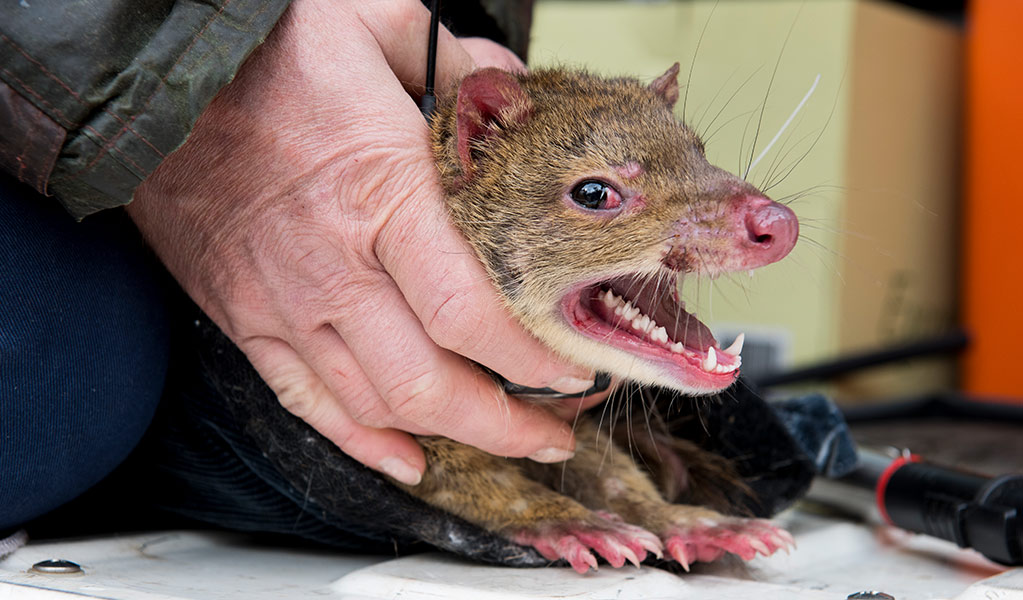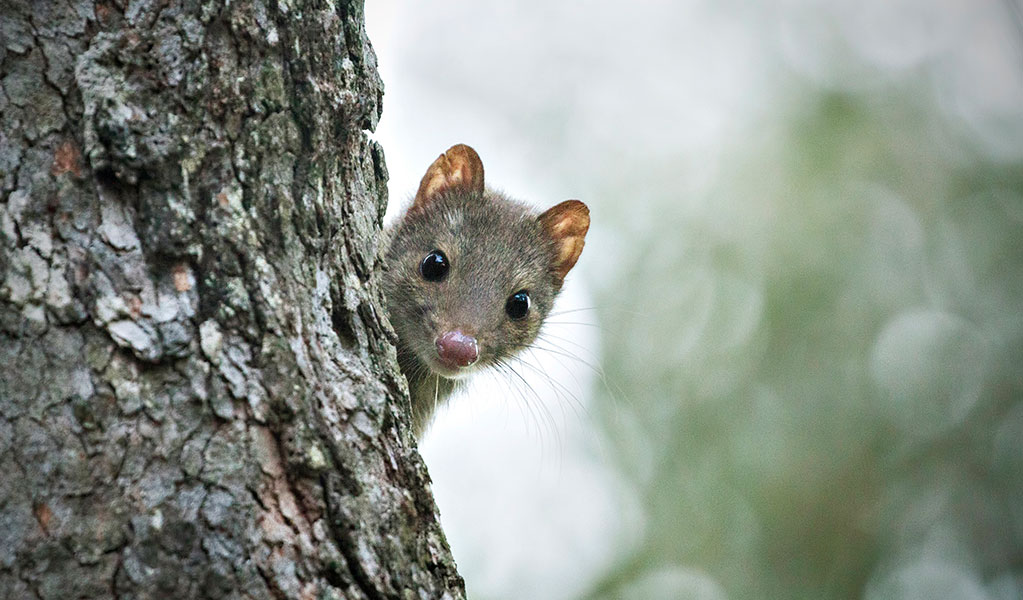Spotted-tailed quoll
The spotted-tailed quoll is the largest remaining carnivorous marsupial on the Australian mainland. It’s protected as a vulnerable species in NSW.
Also known as tiger quolls, spotted-tailed quolls are the largest of the 4 species of quoll in Australia. The size of a domestic cat, with shorter legs and a pointed face, they have rusty-brown fur with white spots that continue down the tail.
A fierce hypercarnivore
Spotted-tailed quolls are hypercarnivores - animals whose diet is over 70% meat. They eat more than 22 species of mammals, from rats and rabbits, to possums, birds, bandicoots and gliders.
This threatened species has the most powerful bite for their body size of any predatory mammal in the world, after their close relative the Tasmanian devil.
Quolls adapt to take advantage of whatever prey is most abundant. Observations of radio-tracked animals and analysis of quoll scats show their fondness for dining on brushtail possums and greater gliders. A hunting quoll will systematically sniff the base of hollow-bearing trees, only climbing those where an unsuspecting sleeping possum or glider is likely to be resting in its daytime den.
6 facts about spotted-tailed quolls
Room to roam
These mostly nocturnal animals live in a variety of environments including rainforests, woodlands, forests, heathlands and sometimes open country. They’re found on both sides of the Great Dividing Range, in NSW, Victoria, Queensland, as well as in Tasmania.
Large, connected forest landscapes are key to quoll survival. Individual males roam vast areas often more than 1,000 hectares, which overlaps with the range of other males and females. Females have smaller, non-overlapping ranges around 200 hectares, where they establish maternity dens in late-winter and early spring. Female territories occur in areas with abundant prey and suitable denning resources, like hollow logs, rock outcrops, small caves, and tree hollows.
Animal facts
- Common name
- Spotted-tailed quoll
- Scientific name
- Dasyurus maculatus
- Conservation status in NSW
- Vulnerable
Threats and conservation
Studies indicate that populations are likely stable across south-eastern Australia’s remaining areas of large, connected forest landscapes. Outside these large reserves, quoll numbers are more vulnerable to threats including habitat loss and fragmentation, changes in climate, increasing wildfire, competition with foxes and feral cats, roadkill and persecution by people, who often blame quolls for harming poultry.
The NSW Government’s Saving our Species conservation program is working to reduce threats and safeguard a future for these native animals. Learn more about the Quollidor Project, which is contributing to improved management and monitoring of quolls in Barren Grounds Nature Reserve and Budderoo National Park, south of Sydney.
You might also like
-
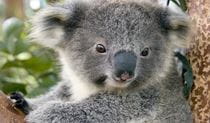
Saving our Species conservation program
Today, we're at risk of losing nearly 1000 of our state's native animals and plants. That's why the NSW Government established Saving our Species. It'...
-
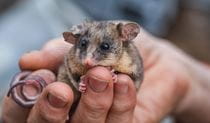
Protecting threatened species in parks
Around 84% of the approximately 900 threatened species in NSW are found in our national parks and reserves. Find out what we're doing to protect threa...
Parks in which this animal is found
- Barren Grounds Nature Reserve
- Border Ranges National Park
- Budderoo National Park
- Guy Fawkes River National Park
- Jenolan Karst Conservation Reserve
- Kanangra-Boyd National Park
- Lower Snowy River area in Kosciuszko National Park
- Monga National Park
- Morton National Park
- New England National Park
- Oxley Wild Rivers National Park
- Southern Blue Mountains area in Blue Mountains National Park
- Tallaganda National Park
- Wollemi National Park

